One cloudy autumn day, we ventured to Heiankaku, an abandoned wedding venue located in Kasama, Ibaraki Prefecture. It turned out to be one of the most photogenic haikyo I have explored to date.

Not much information on this two-storey building can be found except that it opened around 1980 and apparently stayed in operation until at least the 1990s, according to other haikyo enthusiasts. Which means it has probably been abandoned for a good 30 years or so. Local residents apparently conduct patrols and monitor the area, but we didn’t see anyone except for an elderly lady doing some weeding nearby.
Exploring the Heiankaku haikyo

The first thing we noticed when we pulled up to the pale yellow building was that the grounds was filled with random junk. People have clearly been illegally dumping their unwanted goods and other rubbish there, as was evidenced by the numerous signs warning against it.

The grounds is loosely roped off, but despite all the “No illegal dumping” signs, there is no sign saying “No entry.” That was good enough for me.

While there is no way to enter the building from the main entrance under the clock (which is unsurprisingly no longer working), a gaping entrance to the right provides easy access.
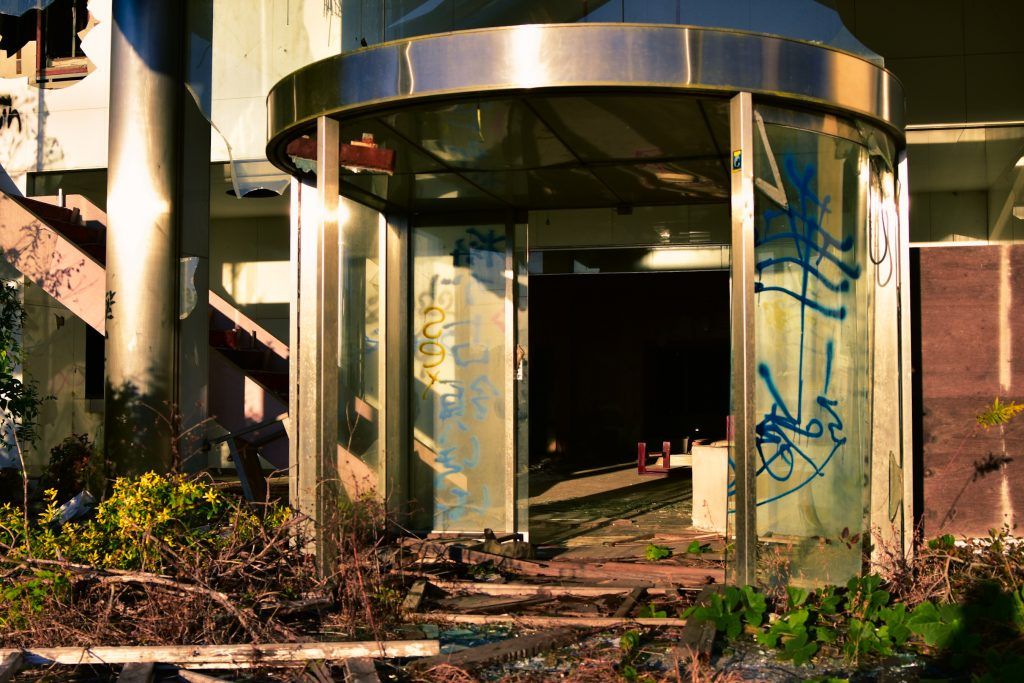
There is a lot of broken glass and debris scattered across the floor, so closed shoes are a must. It seemed like no haikyo enthusiasts have visited this place recently as I literally walked through a cobweb when entering.
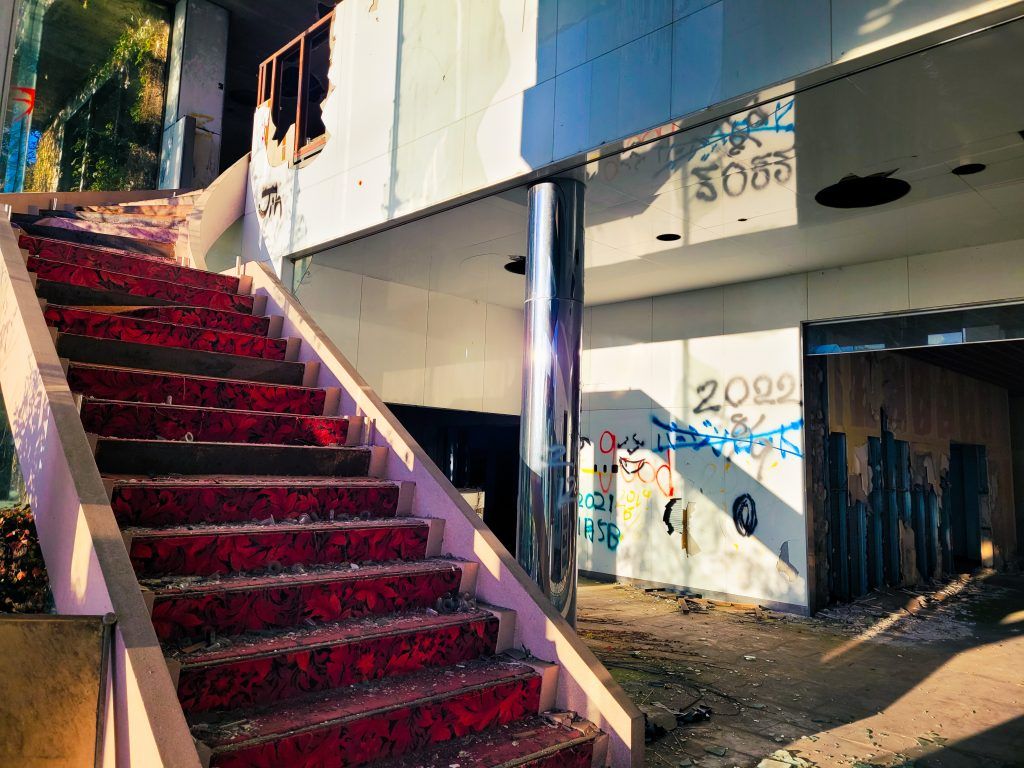
The first thing that stands out is a red carpeted staircase to the left, with every stair sprinkled with glass and these strange vial-like objects.
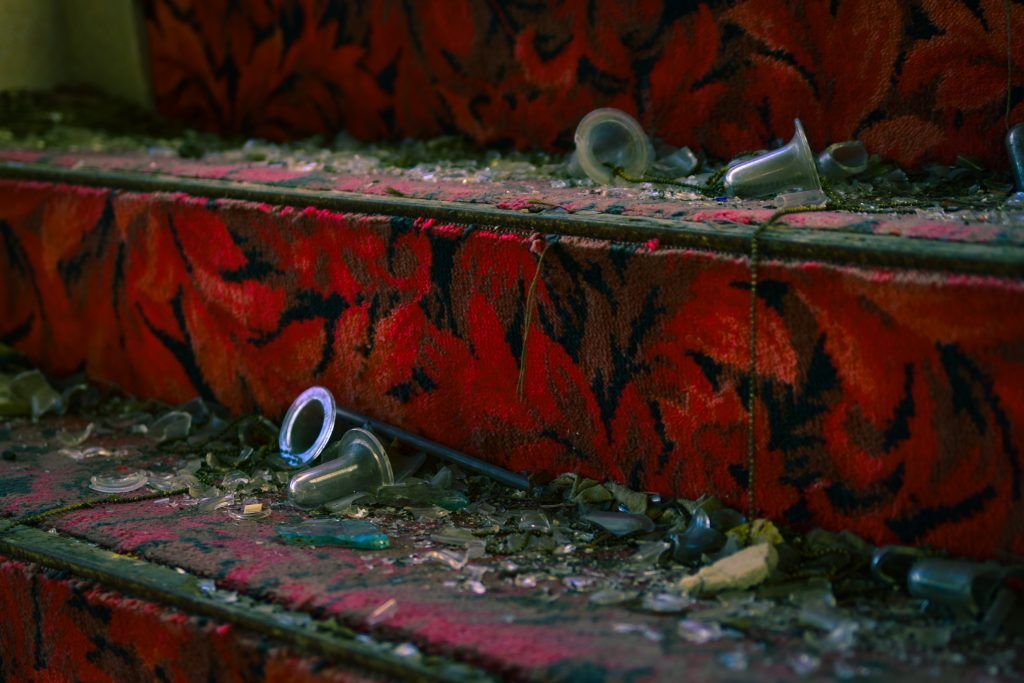
The walls, riddled with graffiti and vandalism, are in various degrees of disarray. The ceilings are not in much better condition either.

To the right there is a Japanese-style room — you can still make out the tatami mats under all the debris.

Bamboo trees can be seen through former windows. This room must have been a very peaceful and picturesque in its prime. Damage resulting from a fire, which is believed to have been deliberately lit over a decade ago, can be seen on the walls here.

The main building is connected via an external passageway that leads through a tree enclosed space.

Venturing in you hit a room filled with large sacks of something and other junk. Tattered rooms stretched onwards as far as the eye can see.

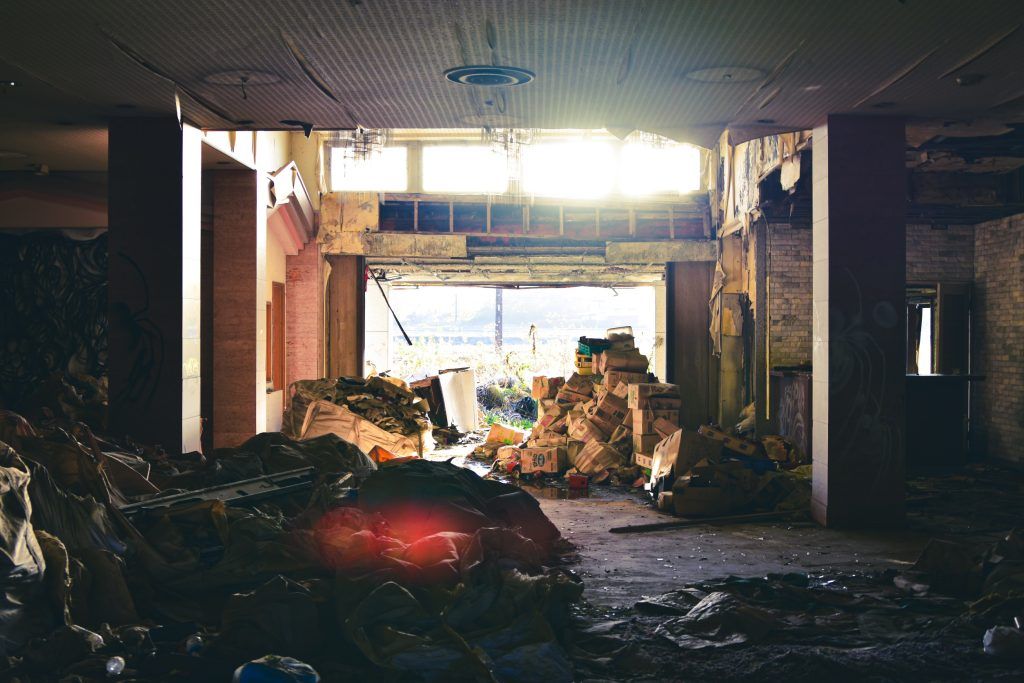
The second floor
Returning to the red staircase near the entrance provides access to the second floor. This is arguably where you can take the most cinematic photos of the Heiankaku haikyo.
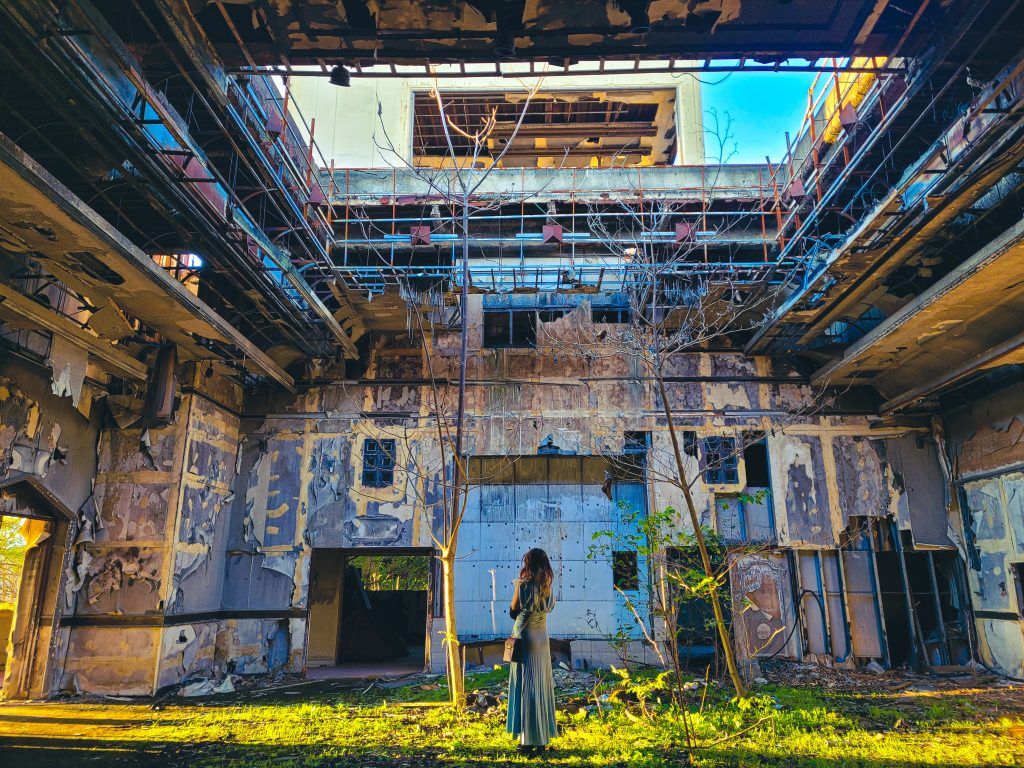
A sprawling room, with an open air roof and a carpet of grass growing. Whether this used to be a garden, or the grass grew over the years as rain fell through the gaping structure, is unknown.
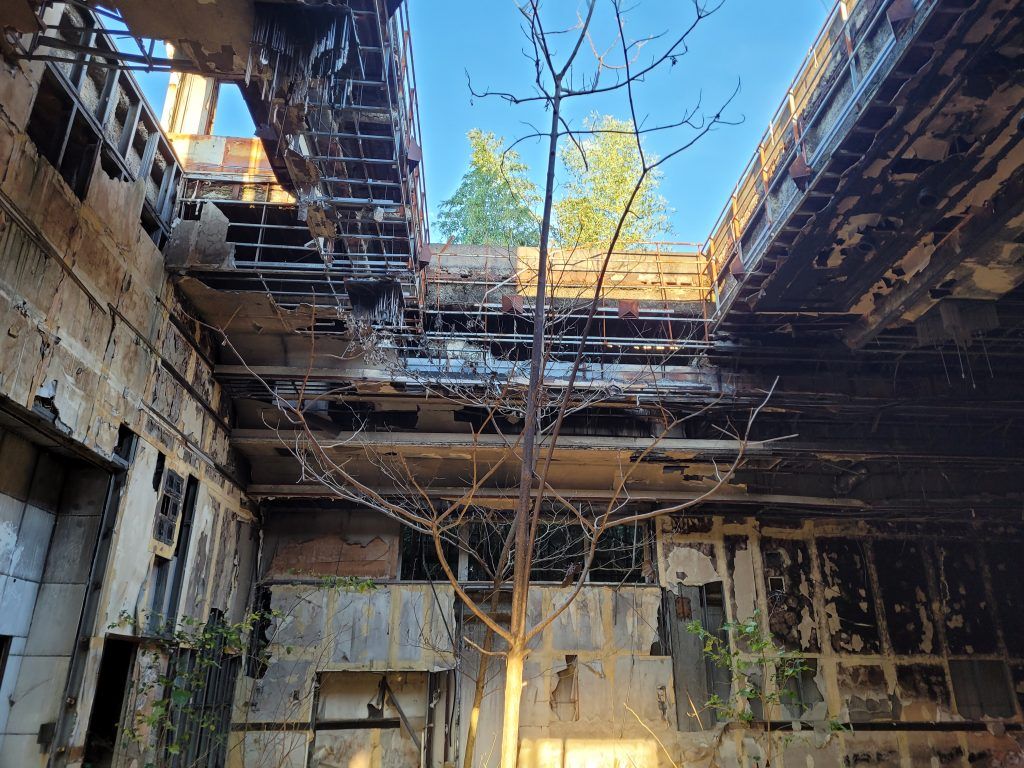
But during golden hour, the sunlight filtering from the broken side windows created a dreamy yet melancholy atmosphere that makes for some incredible photos. Looking at old photos posted to Google Maps, there used to be a red cross on the centre wall, but it has since faded into nothingness. You can still see its faint outline if you look carefully, though.
The walls appear to have fire damage but given how damp it was up there, it could have also been some parts mold.

Outside the room, a dilapidated corridor makes up the rest of the second floor. With its semi-collapsed ceiling and walls, it would be the perfect setting for a horror movie.

Heiankaku was bigger inside than I expected, with countless corners to explore. I definitely did not cover everything, but I was satisfied with I did manage to capture. There is something eerily beautiful about haikyo and Heiankaku ticks all the boxes. But like all haikyo, enter at your own risk.
If you are looking for more haikyo in Ibaraki, read up on The Ghost Town of Hokota or Tsuchiura Black Mansion. Or check out the archives for more articles about haikyo sites in and around Tokyo.
